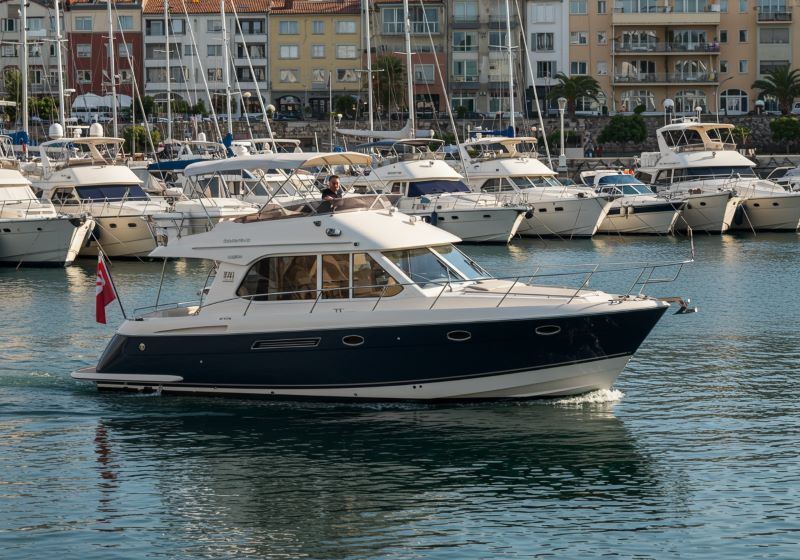
Regular maintenance ensures optimal thruster performance and longevity
Installation Guides
Bow Thruster Installation
Installing a bow thruster requires careful planning and precise execution. Follow these comprehensive guides for different hull types:
-
Fiberglass Hull Installation
Step-by-step guide for installing a bow thruster in a fiberglass hull, including tunnel placement, cutting techniques, and reinforcement methods.
Download Bow Thruster Installation Guide (PDF) -
Aluminum Hull Installation
Special considerations for aluminum hulls, including galvanic isolation and appropriate sealing techniques.
Download Aluminum Hull Installation Guide (PDF) -
Steel Hull Installation
Welding requirements and corrosion protection for steel hull installations.
Download Steel Hull Installation Guide (PDF)
Stern Thruster Installation
Stern thruster installation presents unique challenges due to transom geometry and underwater access. Our guides cover:
-
Transom-Mounted Stern Thrusters
External mounting options that minimize hull modifications.
Download Transom Mount Guide (PDF) -
Tunnel Stern Thrusters
Complete instructions for installing tunnel-style stern thrusters, including placement considerations.
Download Tunnel Installation Guide (PDF)
Maintenance Procedures
Seasonal Maintenance
Regular maintenance ensures reliable operation when you need it most. Our seasonal checklist includes:
-
Zinc Anode Inspection and Replacement
Check and replace sacrificial anodes to prevent galvanic corrosion.
-
Propeller Cleaning
Remove marine growth that can affect performance and balance.
-
Electrical Connection Inspection
Verify all connections are clean, tight, and protected from moisture.
-
Motor Brush Inspection
For electric thrusters, check motor brushes for wear and replace if necessary.
-
Hydraulic System Inspection
For hydraulic thrusters, check fluid levels, connections, and hose condition.
Winterization
Proper winterization prevents damage during the off-season:
-
Electrical Disconnection
Safely disconnect power to prevent phantom loads and battery drain.
-
Corrosion Protection
Apply appropriate protective coatings to exposed metal components.
-
Hydraulic System Preparation
Special considerations for hydraulic systems in freezing conditions.
Troubleshooting Guide
Electric Thruster Issues
Common problems with electric thrusters and their solutions:
| Problem | Possible Causes | Solutions |
|---|---|---|
| Thruster doesn't activate |
|
|
| Reduced power |
|
|
| Unusual noise |
|
|
Hydraulic Thruster Issues
Troubleshooting hydraulic thruster systems:
| Problem | Possible Causes | Solutions |
|---|---|---|
| No hydraulic pressure |
|
|
| Slow operation |
|
|
| Overheating |
|
|
Electrical System Requirements
Battery Specifications
Proper battery selection is critical for thruster performance:
| Thruster Power | Minimum Battery Capacity | Cable Size (up to 7m) |
|---|---|---|
| 2HP (12V) | 105Ah | 50mm² (0 AWG) |
| 3HP (12V) | 150Ah | 70mm² (00 AWG) |
| 4HP (24V) | 120Ah | 50mm² (0 AWG) |
| 6HP (24V) | 150Ah | 70mm² (00 AWG) |
Circuit Protection
Proper fusing is essential for safety and equipment protection:
- 2HP (12V) - 300A fuse or circuit breaker
- 3HP (12V) - 400A fuse or circuit breaker
- 4HP (24V) - 250A fuse or circuit breaker
- 6HP (24V) - 300A fuse or circuit breaker
Always use marine-grade fuse holders and circuit breakers rated for DC applications.
Frequently Asked Questions
How long can I run my electric thruster continuously?
Most electric thrusters are designed for intermittent use, typically 2-3 minutes of continuous operation followed by a cooling period. Exceeding this can cause overheating and potential damage to the motor. For applications requiring longer run times, consider a hydraulic thruster system.
Can I install a thruster myself, or should I hire a professional?
While DIY installation is possible for experienced boaters with the right tools, professional installation is recommended for most situations. Thruster installation involves critical hull modifications that can affect vessel integrity and safety if not performed correctly.
How do I determine the right size thruster for my boat?
Thruster sizing depends on vessel length, displacement, windage area, and typical operating conditions. As a general rule, select a thruster that provides 2-3% of your boat's displacement in thrust. For specific recommendations, consult our sizing guide or contact a marine professional.
Do I need both a bow and stern thruster?
While a bow thruster alone provides significant maneuverability improvement, adding a stern thruster creates a complete system for maximum control. Boats over 45 feet, single-engine vessels, and those frequently operating in challenging conditions benefit most from dual thruster systems.
How often should I service my thruster system?
Perform basic inspections before each boating season and a more comprehensive service annually. Zinc anodes typically require replacement every 6-12 months depending on water conditions. Electric thruster brushes should be inspected annually and replaced as needed.